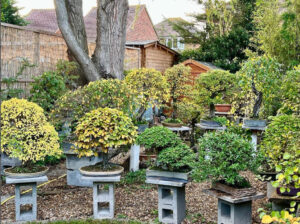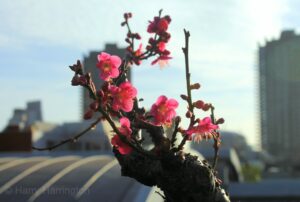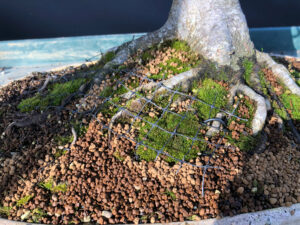Defoliation at midsummer is a well-known technique for improving the ramification and density of the branches of a deciduous bonsai. Defoliation of the leaves on a branch results in new shoots appearing where previously there were individual leaves.
This method of improving the density of the branch structure is not without its limitations. Some trees and tree species react poorly to complete defoliation with dieback of weaker branches. Others will typically return fewer but larger leaves.
Over the years I have found that partial defoliation can give far more satisfying and predictable results with a large number of tree species used for bonsai. Partial defoliation, as the name suggests, involves leaving some of the leaves remaining on the branches as ‘sap drawers’ to allow the tree to continue to photosynthesise and protect its vigour while it responds to the removal of others, leading to better, more predictable results.
Timing and Method
Defoliation is traditionally carried in the lull of active growth at midsummer, where deciduous trees ‘rest’ after the initial Spring flush. During this time, a deciduous tree will be harvesting the sugars produced by the process of photosynthesis in Spring, repairing damage and growing new roots (hence this is also the ideal time for creating new air-layers).
By removing the leaves at midsummer, we spur the tree into a second ‘mini’ Spring when it returns to vegetative growth.
To find the ideal timing, look for a lack of new shoots on the tree, all leaves will have turned to their Summer colour. Although this should occur at Midsummer (last week in June), there can be a variation of a few weeks depending on the tree species, the weather and individual specimens.
Leaves can be removed using scissors where the species has a petiole, that is a stem that connects the leaf to the branch (as seen on Maples (Acer species) or Tilia (Linden)). Where the leaf connects directly to the branch as seen on Elm (Ulmus) , Privet (Ligustrum) or Beech (Fagus), the leaf can be pulled off the branch by hand, pulling backwards to ensure a clean break.
After defoliation, unless sun damage in your location is a real possibility, place the tree in a position with plenty of direct sunlight. The more light given to the tree as it returns into leaf, the smaller they will be. Be aware that the tree maybe very thirsty for a few days after defoliation.
Partial Defoliation
Although relatively gentle in comparison to complete defoliation, Partial Defoliation is still taxing to a tree and it is important to ensure that the tree is healthy and has vigour. Defoliation of any kind on a weak or sick tree should be avoided.
Partial Defoliation involves leaving a terminal leaf, that is, a leaf at the very tip of a branch in place and removing all other leaves behind it on the branch.
The remaining leaf acts as a ‘sap drawer’ continuing to pull sap along the length of the branch and ensuring its health. Where there are multiple leaves at the tip of the branch, remove all but the smallest one.
As the tree comes back into leaf, the tree does not simply replace the leaves that have been removed with another leaf, rather, they are replaced with a new shoot that in itself can carry multiple leaves, greatly increasing ramification.
A number of species such as hornbeam (Carpinus), oak (Quercus) and beech (Fagus) react poorly to complete defoliation, often producing a smaller number of larger leaves. However, with partial defoliation they react very positively and I believe this is an essential technique on these species to create good ramification and allow light into the branches to encourage growth of inner branches.
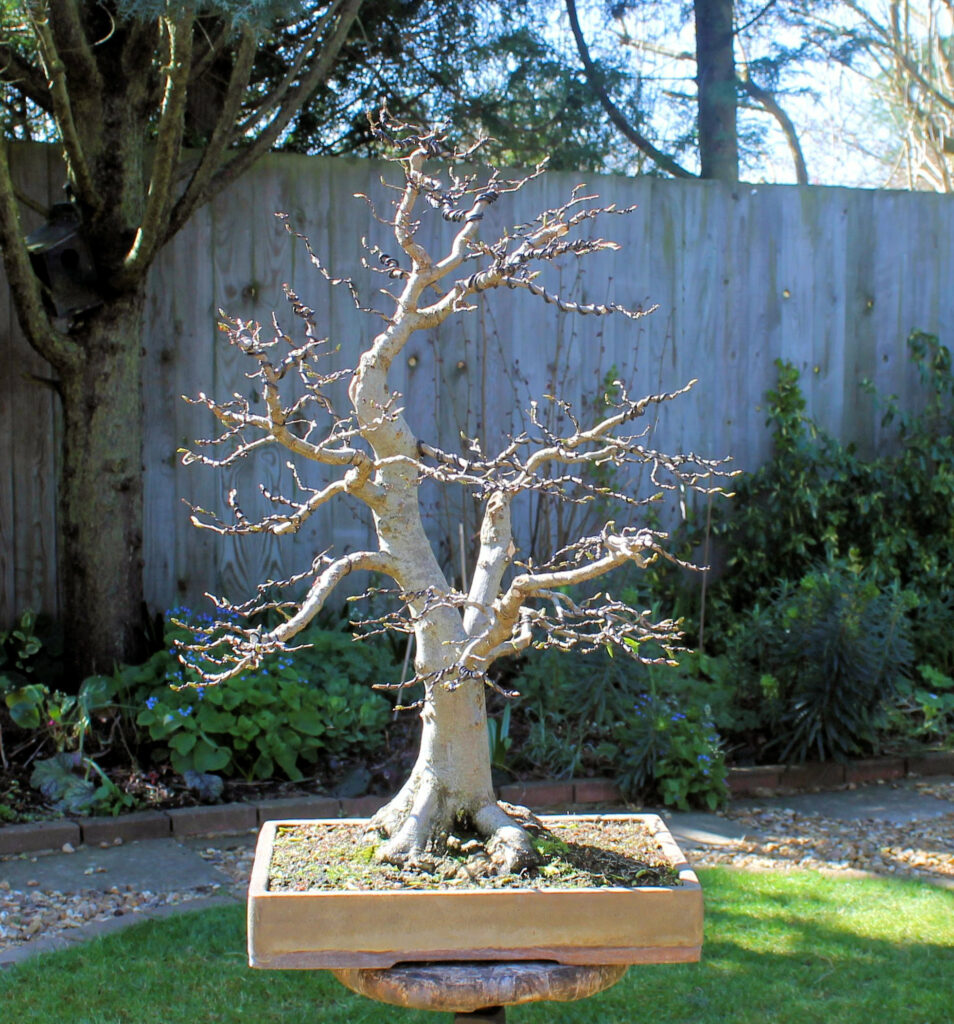
Carpinus betulus/European Hornbeam bonsai that was sent to me by a client during 2016 for styling and refinement. Here the tree is seen before leafburst in Spring after initial styling.
This Carpinus betulus/European Hornbeam has been partially defoliated. Note that a leaf has been left at the end of each shoot as a sap drawer. Larger leaves have been cut in half to reduce their dominance over weaker branches with a smaller terminal leaf (this is not essential).
Where necessary, cut-leaves can be removed once replacement leaves have appeared.
The same European Hornbeam bonsai at Midsummer after partial defoliation, leaving a terminal leaf at the end of each shoot.
.jpg)
The increased ramification of the Hornbeam can be seen after leaf-fall in the Autumn of the same year. Such has been the increase in the number of shoots, a second styling was carried out to further refine the branch structure.
Detail of the Hornbeam branches during the following Winter.
.jpg)
Partial defoliation of a Tilia cordata/Linden bonsai. This very vigorous species suffers from large leaves in Spring and requires partial defoliation at Midsummer to increase ramification and reduce leaf-size.
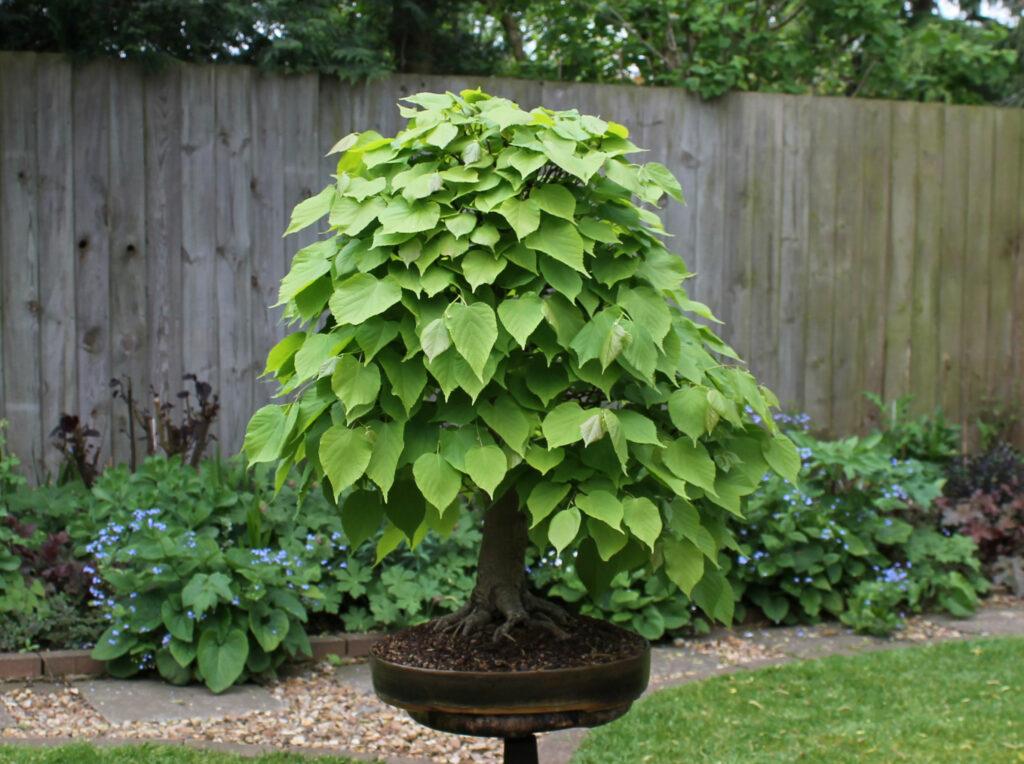
The same Linden 6 weeks after partial defoliation, with a fresh set of smaller of leaves
Partial Defoliation of Evergreen Broadleaf Species in Winter
Some Broadleaf species such as Olive (Olea), Pyracantha, Buxus (Box) and Privet (Ligustrum) can be partially defoliated during the Winter (anytime between growth stopping in Autumn and early Spring). Not only does this give a healthy tree the opportunity of back budding and increasing its ramification twice in a year, it also allows us to study the branch structure and wire and prune as necessary.
The crown of a Ligustrum ovalifolium/Privet bonsai after partial defoliation during the Winter. All but the smallest leaves at the tips of the branches have been removed. This allows light into the canopy, promotes backbudding and also allows the branch structure to be pruned and wired as required.
The same tree after partial defoliation.
Partial Defoliation of Weaker Species
Some species and individual specimens require defoliation to ensure that light can reach the interior of the branch structure. As a for instance, without some defoliation, heavily ramified and congested maple bonsai (Acer species) will begin to lose weaker, interior branches as light fails to reach them. However, complete defoliation on some specimens can be too taxing on their vigour and defoliation of the weaker inner branches can cause them to die-back.
In these cases, it is recommended that the leaves on the interior branches are left in place and all of the leaves on the strongest branches are removed.

.JPG)
.JPG)
.JPG)
.JPG)
.JPG)
